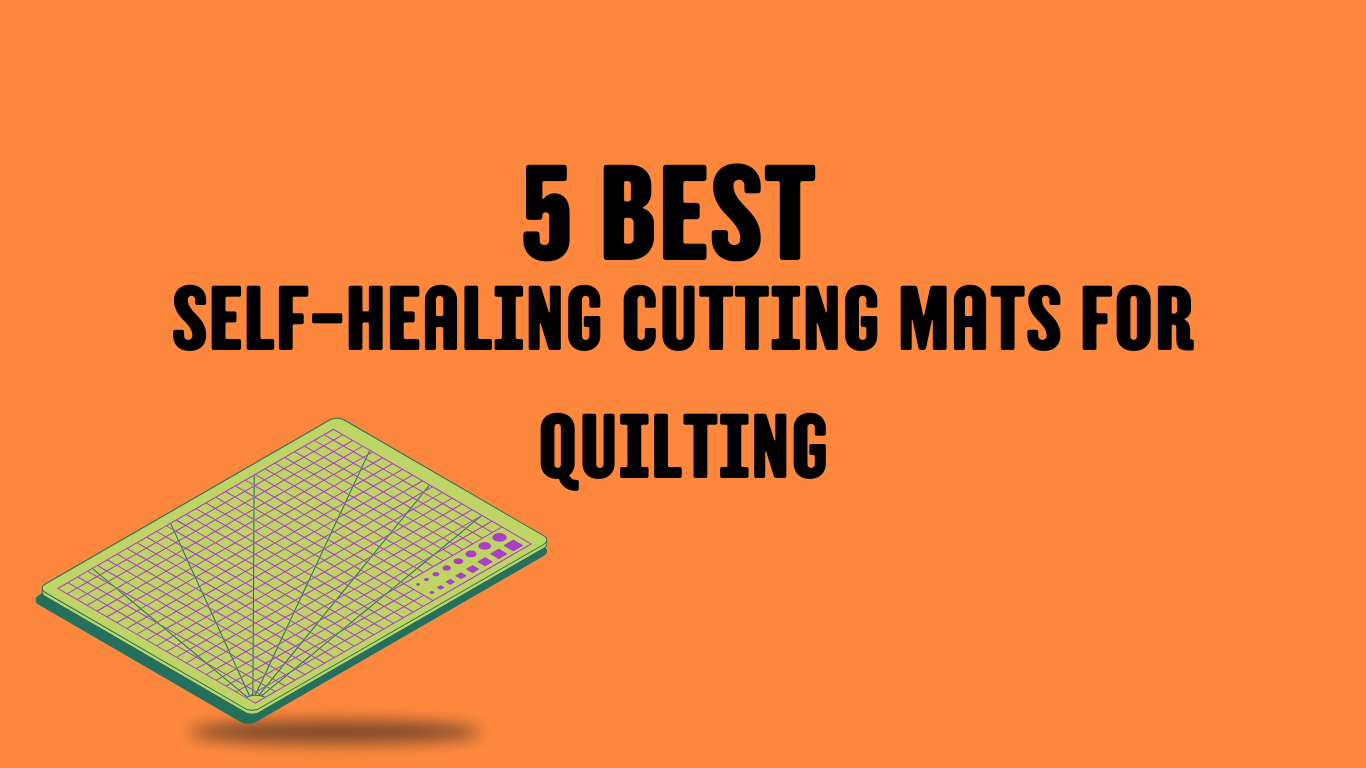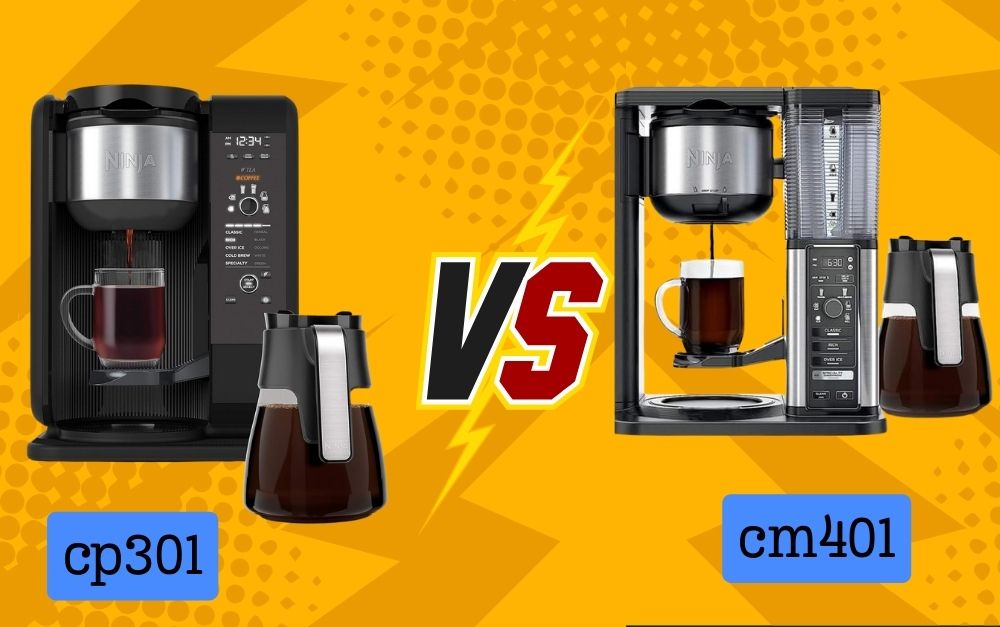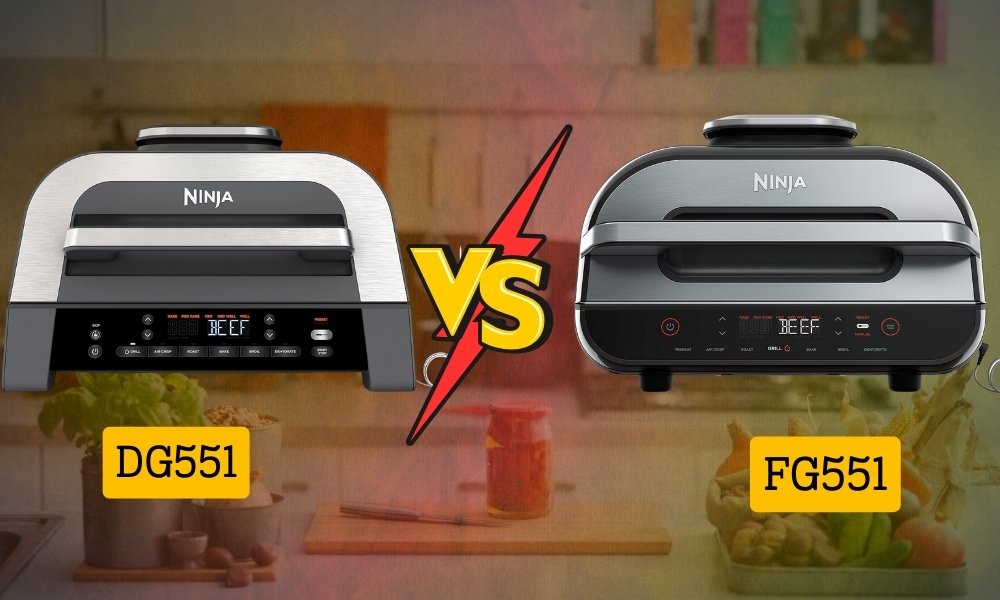If you’ve ever tried cutting quilt fabric on a cheap or worn-out mat, you know the frustration. Grooves that don’t disappear, fabric that slips or frays, and rotary blades dulling faster than they should. It turns what should be a relaxing hobby into a hassle.
But it doesn’t have to be that way.
A good self-healing cutting mat is a quilter’s best friend. It protects your work surface, helps keep your cuts straight, and extends the life of your blades. More importantly, these mats “heal” after each cut, so they stay smooth and ready for your next project.
In this guide, I’ll share five of the best self-healing cutting mats for quilting. I’ve tested these myself or heard strong recommendations from experienced quilters. Whether you’re just starting or upgrading your sewing space, you’ll find a mat here that fits your needs, space, and budget.
We’ll look at each mat’s size, surface quality, grid design, portability, and ,most importantly, how well it performs in real quilting conditions. Let’s dive in!
Our Top Picks
| Olfa Self-Healing Rotary Mat (24″ x 36″) | Best Overall | Jump to Review |
| Fiskars Self-Healing Cutting Mat (24″ x 36″) | Best for Daily Quilting | Jump to Review |
| Martelli Self-Healing Cutting Mat (30″ x 60″) | Best Large Surface | Jump to Review |
| OLFA Double-Sided Cutting Mat (18″ x 24″) | Best for Portability | Jump to Review |
| Dahle Vantage Self-Healing Mat (36″ x 48″) | Best Value for Size | Jump to Review |
1. Olfa Self-Healing Rotary Mat (24″ x 36″)
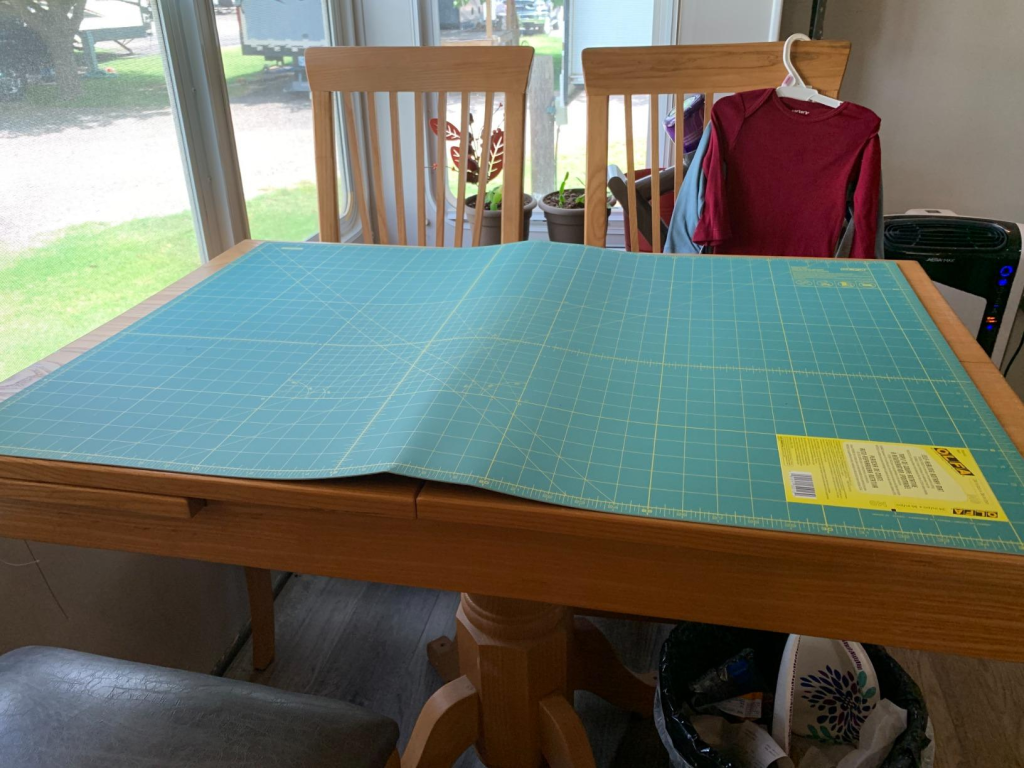
When people ask me for a reliable, all-around cutting mat, I almost always say, “Get the Olfa.” It’s a classic for a reason.
The Olfa mat has a smooth, slightly grippy surface that really does self-heal after each cut. Unlike cheaper mats that show deep grooves, the Olfa stays flat and smooth, so fabric stays perfectly laid out without shifting or bunching.
Its 24 x 36-inch size is perfect for most quilters — big enough to handle fat quarters or strips, but not so big it dominates your table. The grid lines are clear and precise, making measuring and squaring blocks easy.
After cutting dozens of blocks, the Olfa mat still looks almost new. Its surface resists deep grooves and helps keep blades sharp longer. The mat lies flat and doesn’t curl, which can be a problem with some others.
What I like:
- Soft but durable cutting surface
- Crisp, lasting grid lines
- Trusted brand used by pros
Keep in mind:
- Slight chemical smell at first (it fades)
- Only one side is usable for cutting
Best for: Everyday quilters who want dependable performance without fuss.
2. Fiskars Self-Healing Cutting Mat (24″ x 36″)
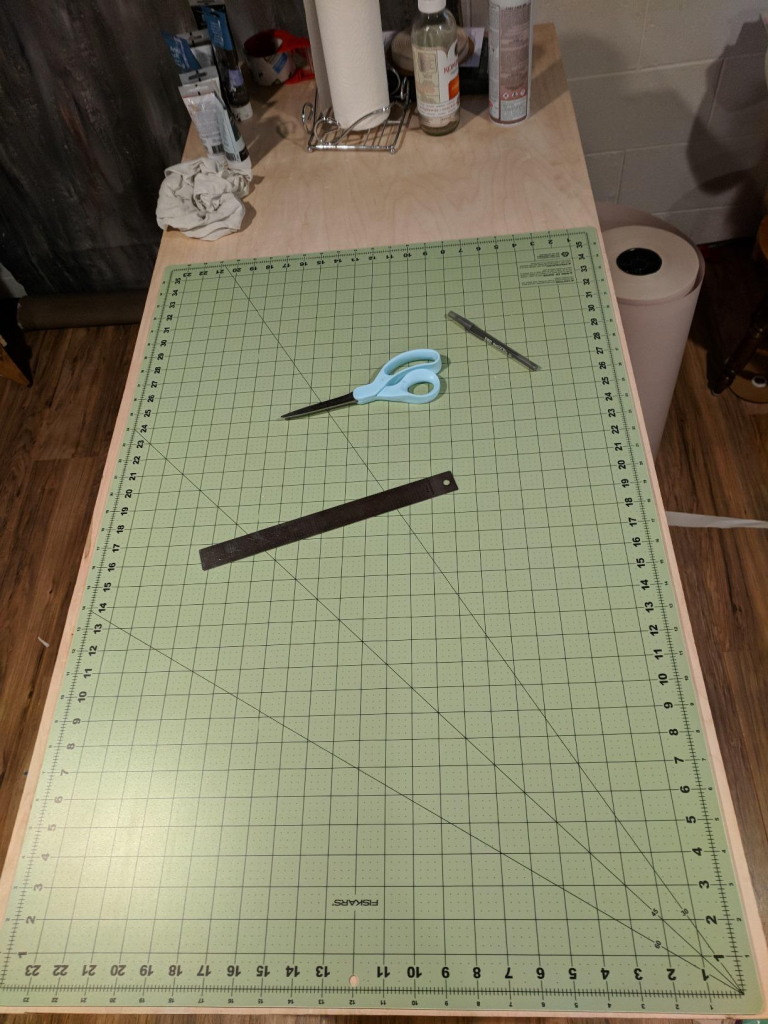
If you’re new to quilting or working with a budget, Fiskars offers a solid choice. This mat has most of the features you need, including self-healing PVC layers and clear grid markings.
It also has handy diagonal and bias lines for cutting half-square triangles or working with blocks on point
features usually found on higher-end mats.
This mat handles light to moderate cutting well. After regular use, you might see some grooves develop, but they stay fairly shallow. The surface is a bit firmer, which can make cutting slightly tougher but also adds durability
What I like:
- Affordable for the size
- Includes bias and diagonal lines
- Easy to find in stores
Keep in mind:
- Surface is harder than Olfa
- Grid lines may fade with sun exposure
Best for: Beginner quilters or budget-conscious hobbyists.
3. Martelli Self-Healing Cutting Mat (30″ x 60″)
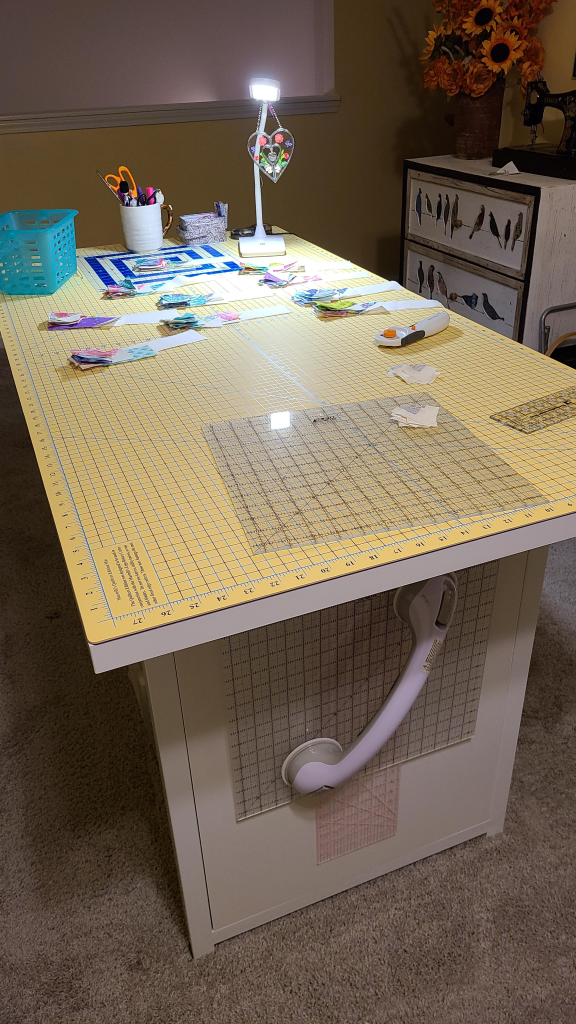
For serious quilters or those who cut large pieces regularly, the Martelli mat is a game-changer. This extra-large 30 x 60-inch mat offers an expansive work surface, perfect for laying out big quilts or cutting multiple layers at once.
It features a matte, non-glare finish with enough grip to keep fabric in place. The multi-layer PVC construction self-heals exceptionally well, and it resists curling even in humid environments.
This mat bounces back from heavy use like no other I’ve tested. Whether you’re cutting long strips or curves, it glides smoothly under the rotary cutter. No snags, no deep grooves. Plus, its large size means you won’t have to constantly reposition fabric.
What I like:
- Professional-grade durability
- Huge cutting surface
- Resists warping and curling
Keep in mind:
- Pricey compared to smaller mats
- Heavy and not portable
Best for: Full-time or serious hobbyists working with big projects.
4. OLFA Double-Sided Cutting Mat (18″ x 24″)

Sometimes you don’t need a huge mat. The OLFA double-sided mat is great for smaller projects or when you’re quilting on the go.
One side is green with yellow grid lines, and the other is neutral gray — great if you work with light or patterned fabrics that need different backgrounds for contrast.
Despite its compact size, it heals just as well as Olfa’s larger mats. The reversible design extends the life since you can switch sides when one starts showing wear. It’s light and portable but still sturdy enough for precise cuts.
What I like:
- Two color options in one mat
- Easy to carry and store
- Excellent self-healing surface
Keep in mind:
- Too small for large fabric cuts
- Grid lines only on one side
Best for: Quilters who travel or need a second mat for small tasks.
5. Dahle Vantage Self-Healing Mat (36″ x 48″)
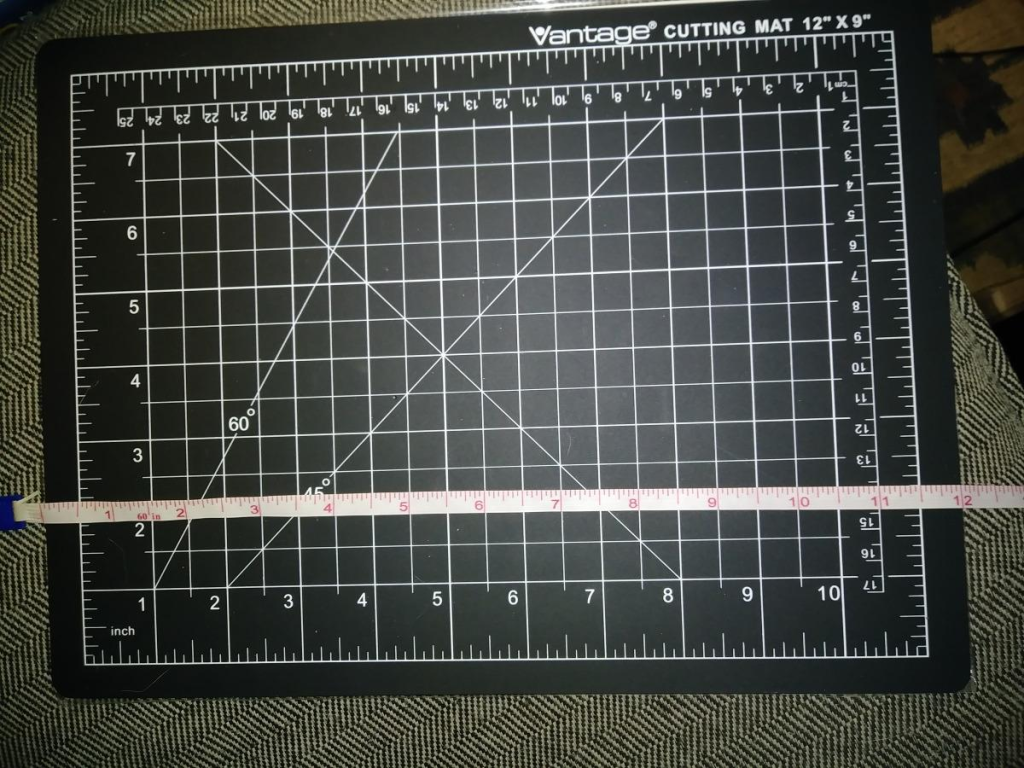
If you want a cutting mat that’s heavy-duty and built to last, the Dahle Vantage is a strong contender. It’s popular in design studios and art classrooms for its tough 5-layer construction.
This mat has both inch and metric markings, which is a bonus if you follow international patterns or mix quilting with other crafts.
Its firm surface gives a precise cutting feel. While it heals a bit slower than Olfa or Martelli, it resists deep cuts and grooves. The large size accommodates most quilting projects comfortably, and the mat stays stable during use.
What I like:
- Durable and professional feel
- Dual measurement grids (inch + metric)
- Good for precise straight cuts
Keep in mind:
- Firmer surface may feel tough at first
- Larger size can be cumbersome in small spaces
Best for: Quilters who want a stable, long-lasting mat for precise cutting.
How We Test Self-Healing Cutting Mats for Quilting
Testing a cutting mat means more than just reading the label. We cut real quilt fabrics repeatedly, using rotary cutters and sometimes knives, to see how well the surface “heals” after each cut. A good mat closes those cut grooves quickly, preventing fabric snags and ensuring smooth next cuts.
Thickness matters a lot — mats thinner than ⅛ inch wear out quickly and don’t protect your table well. We look for 3–5 layers of high-quality PVC for durability.
We also check if the mat lies flat or if it curls, how well it grips different work surfaces, and if the printed grid lines stay clear after months of use.
Odor and portability are considered too since some mats smell strongly at first or are heavy to carry. After all, your quilting mat should help, not add headaches.
Benefits of Using a Self-Healing Cutting Mat for Quilting
A self-healing mat protects your work surface and your tools. The self-healing feature means cuts disappear quickly, so you get a flat surface every time.
This helps keep your rotary blades sharp longer — saving you money and effort. Clear grid lines help you measure and cut accurately, speeding up your quilting process and reducing mistakes.
Also, a good mat prevents fabric from slipping, giving you cleaner cuts and better-looking quilts. Plus, it protects your furniture from damage, which is always a win.
How to Choose the Right Cutting Mat for Quilting
Think about your workspace first: Do you have room for a large mat or need something compact? Bigger mats offer more room but take more storage space.
Thickness is crucial — avoid mats thinner than ⅛ inch. Also, look for mats with durable printed grids and helpful lines like diagonal or bias guides.
If you travel or attend classes, portability is key. Lightweight or double-sided mats can be a good choice.
Finally, consider your budget but remember: investing in a quality mat pays off with better cuts and longer blade life.
Who Will Benefit Most from a Self-Healing Cutting Mat?
Anyone who cuts fabric regularly will notice the difference a good cutting mat makes. Beginners get help with accuracy and avoid mistakes. Experienced quilters appreciate durability and precision, especially when cutting large or multiple layers of fabric.
Crafters in other hobbies like paper or leatherwork also benefit from the self-healing surface and measuring guides.
If you want safer cutting, longer blade life, and cleaner cuts, a quality self-healing cutting mat is one of the best quilting investments.
FAQs
Q1: How thick should a self-healing cutting mat be for quilting?
A: Ideally, ⅛ inch (about 3mm) or thicker. Thinner mats wear out faster and don’t protect your surface well.
Q2: Can I use both sides of a self-healing mat?
A: Some mats are double-sided (like the OLFA 18×24), but many have only one usable cutting surface.
Q3: How do I clean my cutting mat?
A: Wipe with a damp cloth or mild soap solution. Avoid harsh chemicals. Regular cleaning keeps the surface smooth.
Q4: Why do grid lines fade?
A: Sunlight and heavy use can fade printed grids over time. Store mats away from direct sun to prolong markings.
Q5: Do self-healing mats work for rotary cutters only?
A: They work best with rotary cutters but can also handle knives and craft blades.
